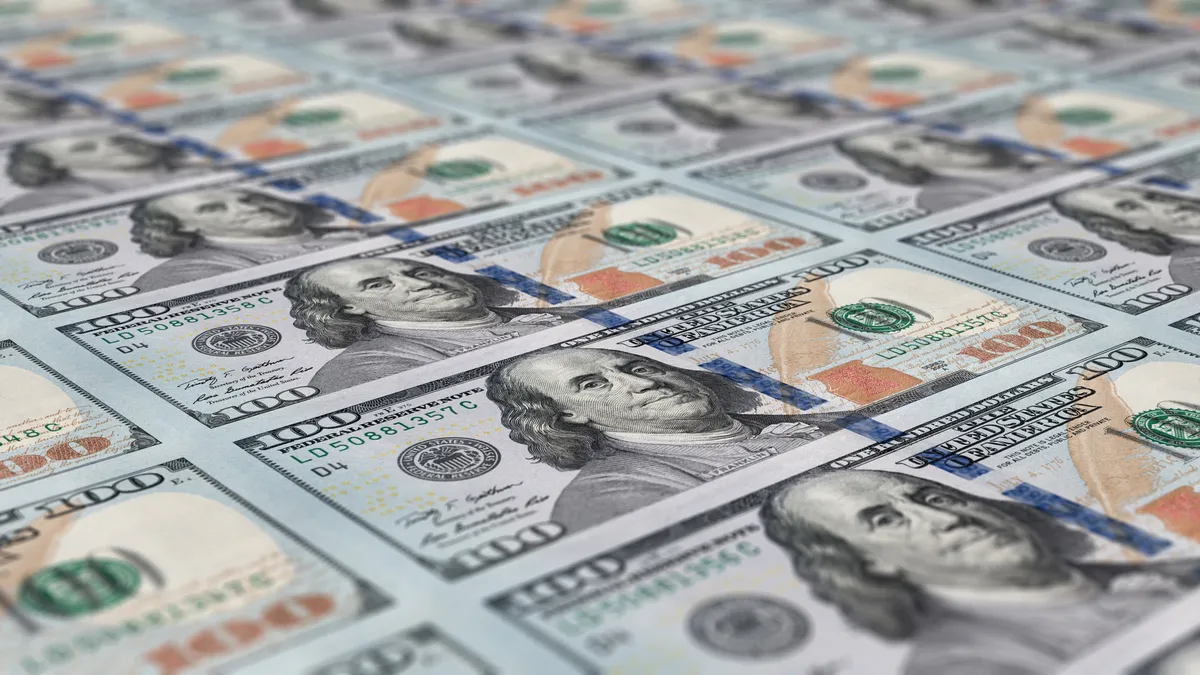Dive Brief:
- The inflation gauge most closely tracked by the Federal Reserve rose in January at the quickest pace in 11 months, reinforcing recent comments by policymakers that they are in no rush to trim the benchmark interest from a 23-year high.
- The core personal consumption expenditures price index, which excludes volatile food and energy prices, increased 0.4% in January after just a 0.1% monthly gain in December, the Commerce Department said Thursday.
- “While the economy has come a long way toward achieving better balance and reaching our 2% percent inflation goal, we are not there yet,” New York Fed President John Williams said in a speech before release of the price data. “I expect inflation to continue its return journey to 2%, although there will likely be bumps along the way,” he said, warning that “inflation may surprise on the upside.”
Dive Insight:
After curbing price pressures from a 40-year high, several Fed officials this year have refrained from declaring sufficient progress in their inflation fight, pushing back by several months market expectations for a cut in the federal funds rate.
Traders in interest rate futures on Thursday set 62% odds that the Fed will cut the main rate by at least a quarter point by mid-June, down from 100% odds a month ago, according to the CME FedWatch Tool.
“We still have a ways to go on the journey to sustained 2% inflation,” Williams said Wednesday. He serves as vice chair of the policy-setting Federal Open Market Committee.
During the past month traders have shifted the probability that the central bank will cut the benchmark rate by a quarter percentage point after a meeting in March to 2.5% from 46%. The Fed in January decided to hold the federal funds rate at a range between 5.25% and 5.5%.
Policymakers are especially intent on averting a rebound in price pressures after having erroneously said in 2021 that a post-pandemic inflationary surge was “transitory,” Pantheon Macroeconomics Chief Economist Ian Shepherdson said Thursday in an email to clients.
“The Fed is hyper-cautious after the ‘transitory’ fiasco and a sustained run of relatively elevated core CPI/PCE prints,” he said, referring to a 3.1% year-over-year gain in the consumer price index in January.
“We see no reason, however, to change our big picture view that core inflation is falling and will continue to slide,” Shepherdson said, citing factors including slower wage gains and improving flows in supply chains.
Chicago Fed President Austan Goolsbee on Thursday cautioned against seeing recent increases in price pressures as the start of a resurgence.
“We've got a really substantial drop” in long-term price pressures, Goolsbee said in a webcast.
“Even with the PCE data that came out this morning, which show a month of rebound, I think you want to be careful extrapolating, ‘Ah, this might go back up a whole bunch,’” he said.
Inflation since mid-2022 has slowed from around 7%.
Atlanta Fed President Raphael Bostic said Thursday that the central bank may begin trimming borrowing costs during the summer.
“The last few inflation readings — one came out today — have shown that this is not going to be an inexorable march that gets you immediately to 2%, but that rather there are going to be some bumps along the way,” he said.
Fed officials in December said they will likely trim the federal funds rate by the end of 2024 to 4.6%, according to a median projection released on Dec. 13.
The central bank is scheduled to publish updated projections on March 20, after a two-day policy meeting.












